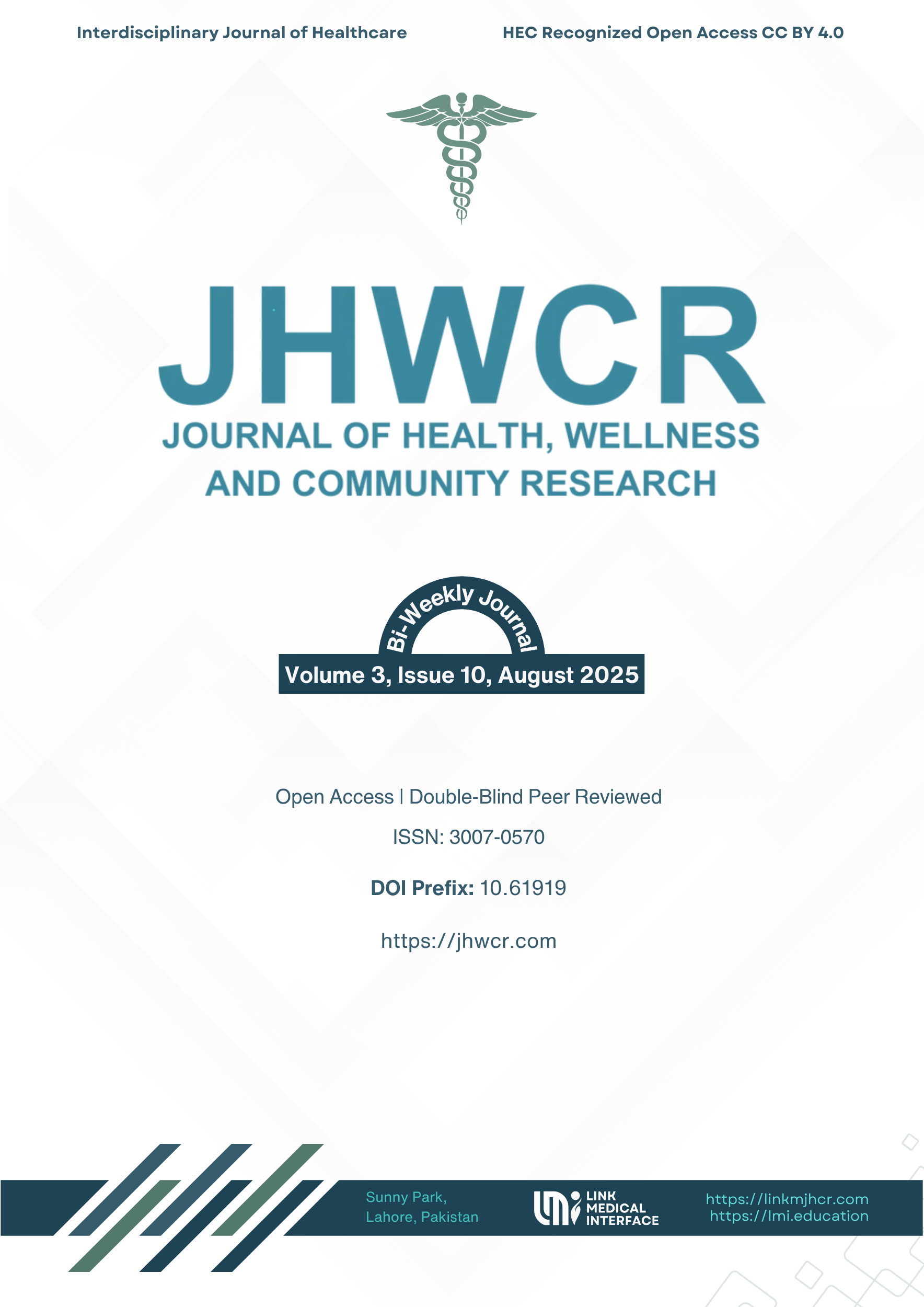A Study on Most Common Causes of Chest Pain in Emergency Department Presentations
DOI:
https://doi.org/10.61919/vet75t11Keywords:
chest pain, acute coronary syndrome, musculoskeletal pain, emergency department, retrospective studyAbstract
Background: Chest pain is one of the most common reasons for emergency department (ED) visits, with etiologies ranging from life-threatening cardiac events to benign musculoskeletal or gastrointestinal conditions. Regional variations in disease prevalence and risk factor profiles necessitate local data to optimize diagnostic pathways and resource allocation. Objective: This study aimed to determine the relative frequency of cardiac and non-cardiac causes of non-traumatic chest pain among patients presenting to the ED of a tertiary care hospital in Peshawar, Pakistan, and to identify demographic associations with cardiac etiologies. Methods: A retrospective cross-sectional study of 350 adult patients presenting with chest pain from July to December 2024 was conducted. Data on demographics, risk factors, investigations, and final diagnoses were extracted from medical records. Standardized diagnostic definitions were applied. Descriptive statistics, chi-square tests, and logistic regression were used to analyze associations, with results reported as odds ratios (ORs) with 95% confidence intervals (CIs). Results: Cardiac causes accounted for 38.6% of cases, predominantly acute coronary syndrome (26.3%). Non-cardiac causes included musculoskeletal (22.9%), gastrointestinal (15.7%), pulmonary (12.9%), and psychogenic (7.1%) etiologies. Patients ≥60 years had nearly fivefold increased odds of cardiac causes compared with younger adults (OR 4.9, 95% CI 2.9–8.3), and males were more frequently affected than females (OR 1.57, 95% CI 1.02–2.42). Conclusion: Cardiac conditions remain the leading cause of chest pain in this setting, but non-cardiac etiologies represent a substantial proportion. Incorporating demographic risk stratification and tailored diagnostic pathways may improve efficiency and accuracy of ED evaluation.
Downloads
Published
Issue
Section
License
Copyright (c) 2025 Muhammad Abas Khan, Abdul Rashid Sheikh, Sadia Binte Tariq, Muhammad Ijlal, Shakeela Qazi, Leena Siddiqui (Author)

This work is licensed under a Creative Commons Attribution 4.0 International License.


